Even though the buying process still involves multiple decision makers and rounds of negotiation, buyer behaviors and customer expectations have changed dramatically over the past few years.
Prior to engaging in a conversation with a supplier, industrial buyers are likely to have done a fair amount of research online.
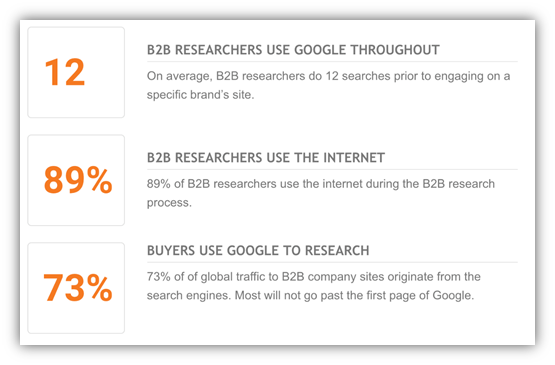
They also expect a customer experience akin to B2C businesses, such as personalized content and an interface that allows them to conduct an entire transaction, manage their account, or get customer support online so they can do their job whenever and wherever that is most convenient for them.

The shift toward eCommerce, however, doesn’t mean you can throw customer relationships out the window.
Many buyers consider products from manufacturers as “commodity.” Often times, a slightly better price or marginally better product isn’t enough to distinguish your business from your competitors.
Now, more than ever, B2B buyers want to do business with companies that offer an outstanding customer experience and put in the effort to build long-term relationships.
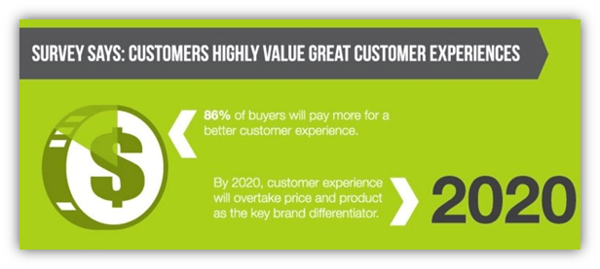
After all, changing vendor can be a complex procedure and once a company is committed to a vendor they’d likely remain a long-term customer.
As such, you need to build trust and cultivate relationships with buyers early on in their decision-making process so when it comes time for them flip the switch, your company will be top of mind.

The purchasing habits of B2B industrial buyers in the manufacturing sector are changing as a new generation of digital natives takes on decision-making roles.
Even though the buying process still involves multiple decision makers and rounds of negotiation, buyer behaviors and customer expectations have changed dramatically over the past few years.
Prior to engaging in a conversation with a supplier, industrial buyers are likely to have done a fair amount of research online.
As a vendor, you need to get in front of your prospects early on in the buying process – build brand awareness even before they start thinking about switching supplier and continue to cultivate the relationships until they’re ready to make a purchasing decision.
You need to position your company as a thought leader in the industry and an ally to your prospects’ success.
You need to appear in front of your prospects in the right place at the right time with the right message to demonstrate your relevance so they’ll continue to engage with your company.
Outbound marketing depends on a single (or very few) touch point and interaction. If you make a call or attend a trade show at a time when a prospect isn’t actively looking for a supplier, you won’t be able to capture the opportunity.
On the other hand, the inbound marketing methodology is particularly suitable for the relatively lengthy buying cycle in the manufacturing industry, which often takes 6 – 12 months or longer, and involves multiple stakeholders.
Inbound marketing gives you a framework to organize value-add content and interactions at multiple touch points during the customer lifecycle, so you can effectively:
Not to mention, inbound leads cost 61% less than outbound leads and the methodology is ideal for companies aiming for long-term ROI.
Intrigued? Wondering how to implement inbound marketing for your manufacturing business? Read on…
The framework is built on customer lifecycle and the strategies are designed to move prospects along the purchasing path.
With inbound marketing, prospects find your business through channels like blogs, search engines, and social media.
By publishing content that addresses the problems and needs of your ideal customers, you attract high-quality leads while building trust and credibility for your business – which will lead to conversion.
In addition, inbound marketing is measurable. With the right technologies, you can track every marketing dollar to help you fine-tune your tactics and focus on activities that deliver the highest ROI.

The goal of this stage is to get in front of high-quality leads – namely, decision-makers and stakeholders in a company – that are most likely to make a buying decision and turn into customers.
Remember most B2B buyers tend to do quite a bit of research online before they decide to interact with a vendor?
The inbound methodology is designed to capture your prospects at, or before, this stage with content that drives traffic to your website (e.g., with SEO), builds awareness, and positions your brand as an industry leader.
Besides optimizing for search engines, you can also get in front of a new audience by guest posting on authority websites where your prospects get their information.
In addition, social media is a great way to promote your content thanks to the ability to target a specific audience on these platforms.
LinkedIn, with its ability to segment by roles, titles, and industry, is a particularly effective platform for B2B marketers.
Once you start driving traffic to your website, you need to convert them from visitors into leads by collecting their contact information so you can continue the conversation, build trust, and follow up.
You can offer a piece of valuable information (a lead magnet) in exchange for your prospects’ information.
Most likely, this lead magnet is a downloadable digital file, such as an eBook, video training, informative spec sheet, or useful CAD file. In addition, webinars have a high perceived value and are popular among some B2B marketers.
Besides email and name, you can use this opportunity to gather other pertinent information during the sign-up process to segment your list. E.g., title, role, industry, and company size, etc.
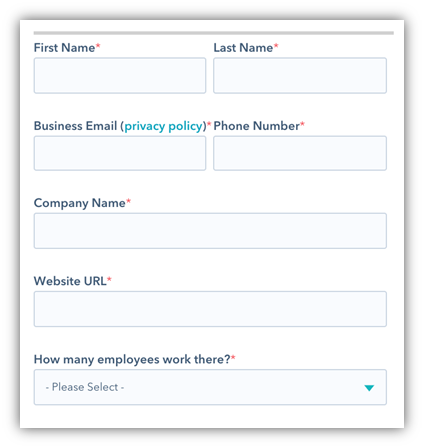
Once you have collected prospects’ information, you can continue to nurture the relationships by providing value through content while educating prospects about your products.
Sitting on a large email list won’t make you any money if subscribers aren’t turning into buyers.
This stage focuses on nurturing leads with the objective of turning them into customers.
A CRM (customer relationship management) system helps you keep track of these relationships so you can follow up with the most relevant content and offers.
Such centralized system allows for the transparency your inbound marketing team and inbound sales team need to work in synch and deliver a seamless sales experience.
It makes it possible to leverage the power of personalization automation in email marketing, which has the potential to generate an ROI of 4300%.
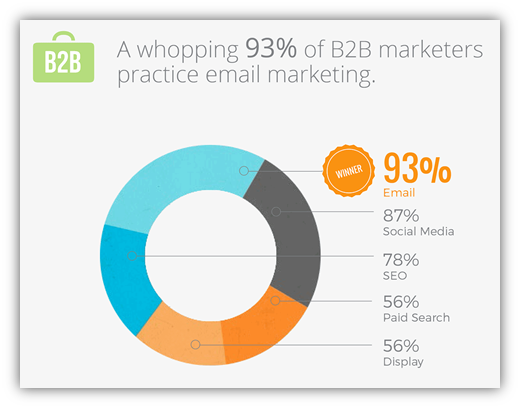
With the ability to segment your list and leverage personalization technologies, you can deliver content and offers that are most relevant and valuable to the lifecycle stages of each prospect – taking them down the path to conversion.
A CRM system also allows you to collect and evaluate data and identify leads most likely to convert with a technique called “lead scoring.”
Following up with prospects individually is a great way to turn “hot” or “warm” leads into customers.
However, as you continue to generate leads, it won’t be practical to contact each and every prospect.
A lead scoring system helps evaluate the potential of a lead to convert, so you can focus your resources on the most qualified prospects.
Manufacturers often have fewer customers but the value of each transaction is typically quite high.
Losing one customer can put a substantial strain on your company’s financial health, making customer retention all the more important.
Inbound marketing, with its focus on cultivating customer relationships, is well suited to helping you build customer loyalty after the initial transaction.
At this stage, you can offer exclusive content that helps your customers get the most out of your products, have industry experts share their knowledge in customer-only webinars, or invite high-value customers to appreciation events.
Keep in mind that you’re cultivating trust and relationships with decisions makers as individuals as much as with the company that’s paying for your products.
After all, these individuals are the ones who make purchasing decisions. If they switch jobs, there’s an opportunity for you to open up a conversation with another company if these stakeholders are on your side.
The exact strategies and tactics you use may differ based on your industry, business objectives, and budget.
However, there are some basic components you need to know if you want to get the most out of your marketing dollars:
You need to first set specific and measurable goals to help you select the most suitable strategies and tactics for your marketing.
Establish key performance metrics (KPIs) to measure the effectiveness of your efforts so you can focus on the activities that’ll move the needle for your business.
A buyer persona is a “profile” of your ideal customer. Besides demographic information, it should address your ideal customers’ psychology, desires, values, challenges, habits, and preferences.
As a B2B supplier, you’re likely to be dealing with multiple stakeholders during the sales process. They have different priorities and you need to create a persona for each to help you understand what they’re looking for at each stage of the process.
Understanding your target audiences will allow you to focus resources on reaching high-quality leads by showing up in the right place at the right time with the right message.
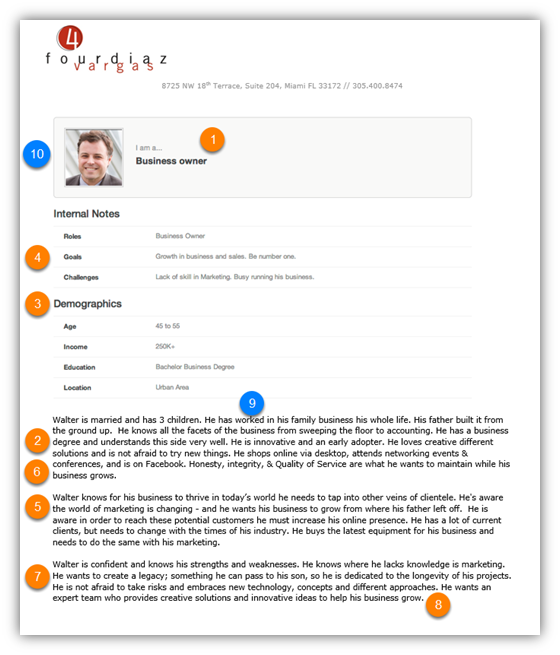
A customer journey is constructed from the customers’ perspective to map out their experiences at each stage of their interaction with your business.
It helps you understand what prospects need to know and how to position your content so they’ll progress through the purchasing path.
For example, a prospect at the “close” stage may find information specific to your products most helpful. However, such content is quite irrelevant to an audience that is still in the “attract” stage.
A content map sums up your buyer personas, their customer journey, the kind of content that will appeal to them at each stage, and the channels through which prospects and customers interact with your business.
It’s the roadmap to producing relevant and valuable content, which will help you attract and convert your ideal customers, by staying focused on your content production and promotion efforts.
It also allows you to clearly communicate your content strategy so you can effectively delegate or outsource these tasks.
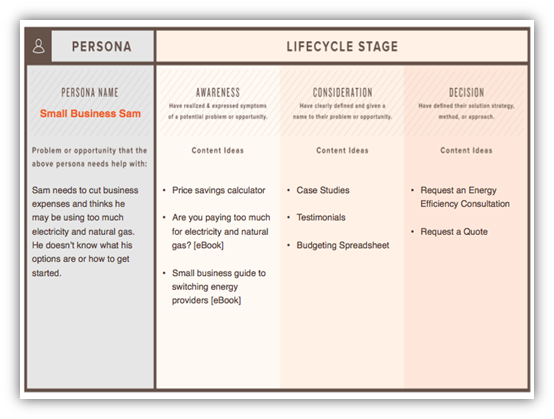
A content calendar gives you the structure to coordinate content production, implementation, and promotion so you can manage your content marketing, which is an essential component of inbound marketing.
This document should map out at least 3 – 6 months worth of content so your marketing team can line up everything required to utilize and promote a piece of content effectively (e.g., email marketing, social media marketing, influencer marketing, etc.)
When you have the right technologies in place, it’s easy to gather metrics and track the success of your campaigns against the KPIs established in your business objectives.
Review your data periodically with your marketing team to see what’s working and what isn’t. Run A/B tests to help fine-tune your tactics then make adjustments to optimize your marketing budget.
However, defining a sound strategy, setting up the right technologies, and coordinating the many moving parts can be overwhelming – even if you have an in-house marketing team.
Here at RiseFuel, we have spent XX years perfecting inbound marketing for manufacturers in many industries.
From increasing brand awareness to driving high-quality traffic and nurturing leads, we take the best of inbound marketing and turn them into strategies manufacturers can use to acquire and retain more customers.
Copyright © 2015 - 2022 RiseFuel. All Rights Reserved.